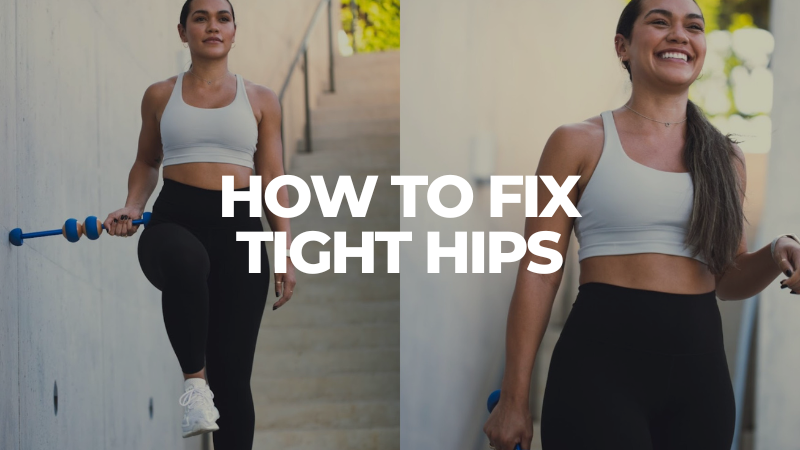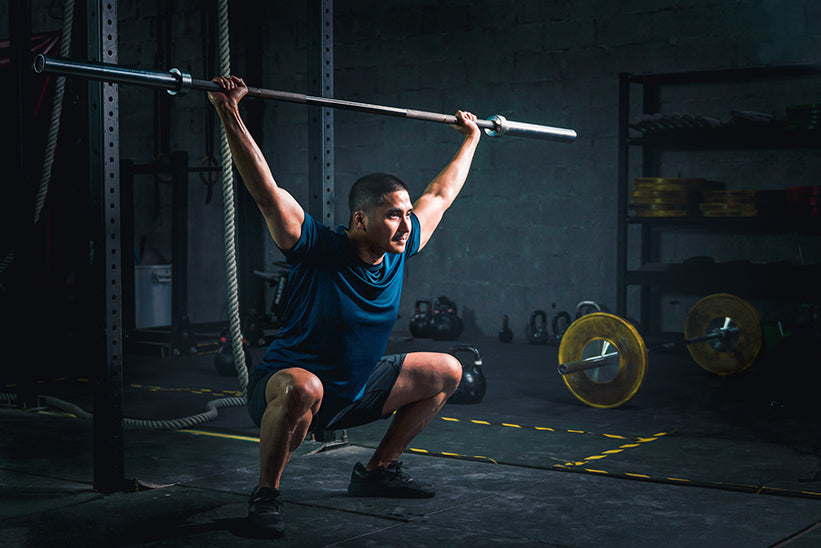Hip mobility is something we have from the time we are born. Just think about the baby who easily puts their toes in their mouth. Our mobility enables a sensory-rich experience as we explore our environment and start hitting our developmental milestones of stability, balance, and body control.[1]
In part of this early discovery, we use our hip mobility to begin exploring our body’s ability to control movement and add needed stability during the transitions to rolling, crawling, kneeling, standing, and locomotion.
Hip mobility is necessary for stability, and pelvic stability is essential to maintain hip mobility. Better mobility also means the muscles and connective tissues around the hips work together with dual roles, and both are important to support the hip’s position, posture, and movements.
What Limits Hip Mobility?
This combination of hip mobility and pelvic stability (also known as core stability) optimizes movement, strength, and power in the hips while creating a central, stabilizing force that protects the lower spine.

The human kinetic chain upon which the body depends for functional movement consists of these mobile joints coupled with a stable segment adjacent to the joint. [3]
So, one of the more common issues that will negatively affect hip mobility is when muscles and fascia connected to the pelvis have excess tension or tightness that pulls the pelvis out of a good posture and position. This limited hip mobility can then reduce quality of movement and contribute to a lack of core stability that protects the lower spine which is connected to the pelvis.

Imagine your own pelvis is a bucket that holds water. When the pelvis is in a neutral position that supports healthy hip mobility and pelvic posture, the water stays in the bucket. If the muscles create tension that pulls on the front of the hips and pelvis, it will tip the bucket forward and spill the water out of the front of the bucket. This is called an anterior pelvic tilt position, which can limit hip mobility.

If the muscles and fascia create tension on the back of the hips and pelvis, this will tip the imaginary bucket backward, and the water will spill out of the back of the bucket. This is called a posterior pelvic tilt.

Myofascial release on muscles around the hips can reduce tension that contributes to anterior or posterior pelvic tilt that disrupts your hip mobility. Adding myofascial release to improve your hip mobility can also serve the dual purpose of improving posture and core stability.
Myofascial Release Techniques for Hip Mobility
Therefore, incorporating myofascial release during warm-up, recovery, and mobility-targeted programs can improve your training results and reduce the risk of injury in the hips and low back area. For this reason, MOBO has efficiently combined three self-myofascial releases that target hip mobility in the Power3-Hip video series:
1. Front Hip Release
The Front Hip Release can reduce tension in the hip flexors that commonly pull the pelvis forward, thereby closing the hip joint angle and limits the hip range of motion.

2. Side Hip Release
The Side Hip Release can reduce tension in the TFL muscle on the side of the hip that can create imbalances on the lateral aspect of the hip and upper leg position.

3. The Glute Release
The Glute Release can reduce tension on the back of the hip and pelvis that can contribute to posterior tilt and external rotation and encourage the upper leg to turn outward.

🎯 Power3 - Doctor-Approved Myofascial Releases
Each of these three MOBO releases uses the Press and Move myofascial release technique, also known as pin and release, in an efficient and practical series.[2] Use this Power3 in your warm-up before running, starting your fitness session, or prior to sports training to get the advantage of better hip mobility.
References
- CDC’s Developmental Milestones.
- Laudner, K., & Thorson, K. (2020). Acute Effects of Pectoralis Minor Self-Mobilization on Shoulder Motion and Posture: A Blinded and Randomized Placebo-Controlled Study in Asymptomatic Individuals, Journal of Sport Rehabilitation, 29(4), 420-424.
- Wainner, R. S., Whitman, J. M., Cleland, J. A., & Flynn, T. W. (2007). Regional interdependence: a musculoskeletal examination model whose time has come. J Orthop Sports Phys Ther, 37(11), 658-660.



